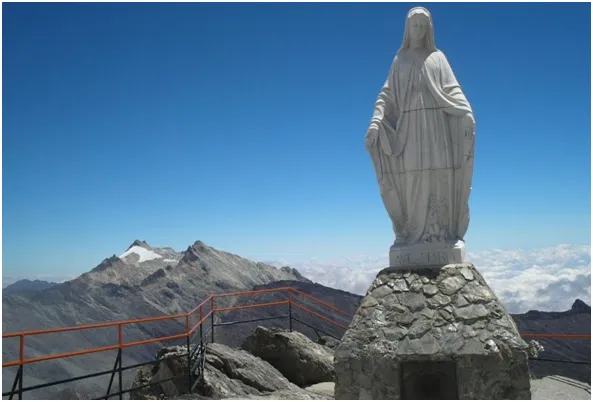
Image
Dear friends of this platform, today I am going to take you to the heights of the highest mountains in Venezuela, where the sculpture in honor of the "Virgen de las Nieves" was erected, which you can easily go to because it is very close to the last station of the Mérida cable car; although the daring mountaineers can reach it traveling slippery and stony paths, having to climb icy and steep mountains. I hope you enjoy the images and the description of this magnificent sculpture and its splendid place.
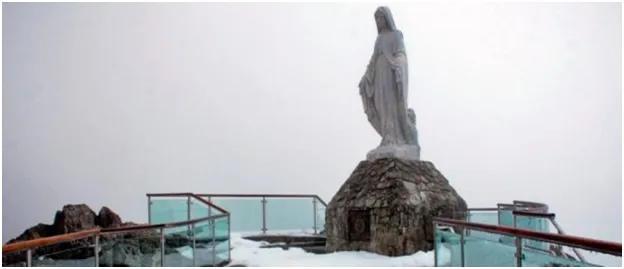
The architect Haiman El Troudi, tells us the story of “Our Lady of the Snows”, which begins on Mount Esquilinio, a Roman snow-capped mountain, where they say that the image of Mary was seen by the couple Juan Patricio and Licina Ignavia, who they believed it was a miracle in response to her pleas to be able to conceive a child. The fact is that the couple had a son, so later, under the period of Pope Liberius, a temple was built in his honor. The devotion to the appearance of the “Virgin of the Snow”, spread throughout the Catholic world in the midst of the decline of the Roman Empire. See: https://haimaneltroudi.com/la-virgen-de-las-nieves-reina-en-las-alturas/

Image
The image of the "Virgin of the Snows", like all virgins, is an invocation of the Virgin Mary; The Catholic Church has declared August 5 to celebrate its holiday. In our country, the Virgen de las Nieves is venerated mainly by the people of Merida and her statue has been placed in the fifth and last station (Mukumbarí) of the Mérida Cable Car at 4765 meters above sea level, surrounded by snow and perched on a mantle of alpine flowers called “frailejones”, with semi-extended arms, which produce a unique spectacle in the world.
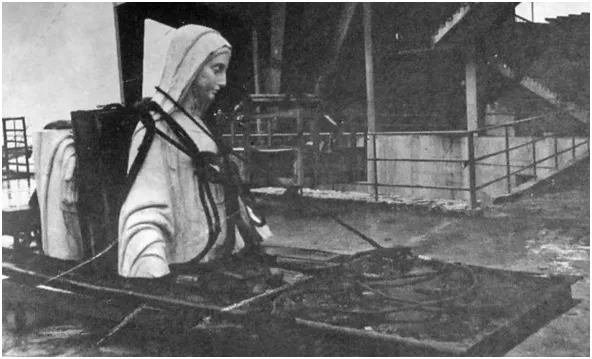
Image
It is considered the Marian image located at the highest altitude in Venezuela and in the world. As a curious fact, it is worth noting that this image has also been the patron of Ciudad Bolívar since the end of the 16th century, a city located 1,255 kilometers from Mérida, where it is said that the Spanish expeditionaries were retreating through the jungle. Exhausted, they implored the miraculous Roman Virgin to end their sufferings, through a novena that ended on August 5. Vide, Haiman El Troudi.
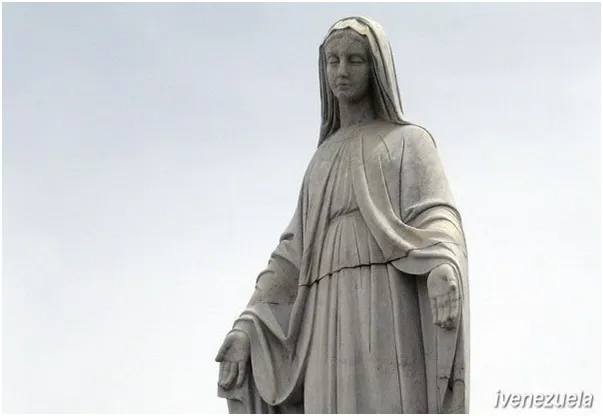
The sculpture, built in 1965, has a height of 3.5 meters and weighs five tons, it was sculpted in Italy by Walter Ribani, who used the highest quality Carrara marble. For its transfer to the city of Mérida and later to the Espejo peak, it was necessary to divide the structure into three parts, which made it possible to use the cable car services. The virgin looks towards the city of Mérida, she is covered with a wide tunic and on her chest she has a pin with the shield of Venezuela; on the front of the base it reads "Ave Maria". The structure stands on a quadrangular pedestal eight feet high, topped by a truncated pyramid, eight feet high, made of reinforced concrete, covered with rocks from the area, which was designed by Raymond Ruffieux. The monument to the Virgin is placed in a small square near the terminal station of the cable car, on the “Espejo” peak.
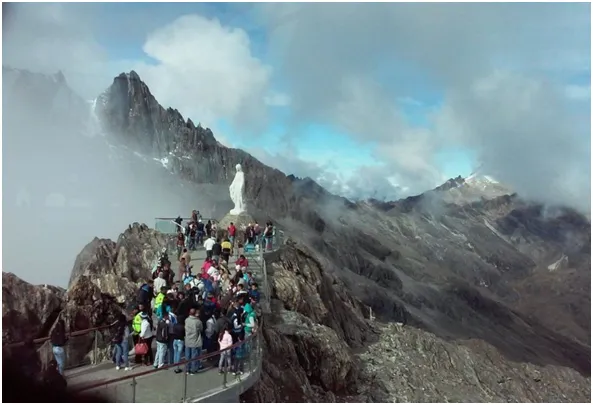
Image
From this monument you can appreciate the landscape of the Sierra Nevada de Mérida, so, in addition to being a space for spiritual recollection, it has become a place for the enjoyment of national and foreign tourists, in general.
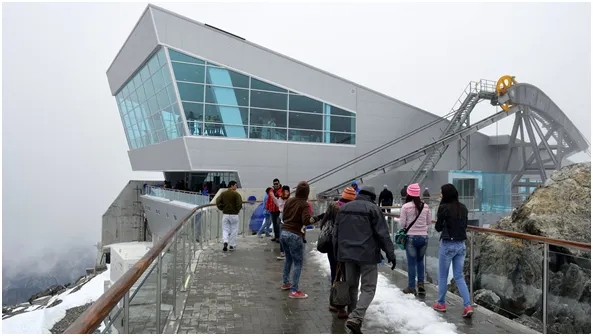
Image
The monument to the patron saint of mountaineers and mountaineers was declared, in 2007, an “Asset of Cultural Interest of the Nation”, by virtue of being the image of the most famous virgin in the world for its dimensions, the artistic quality of the sculpture and the location and altitude where it was erected.
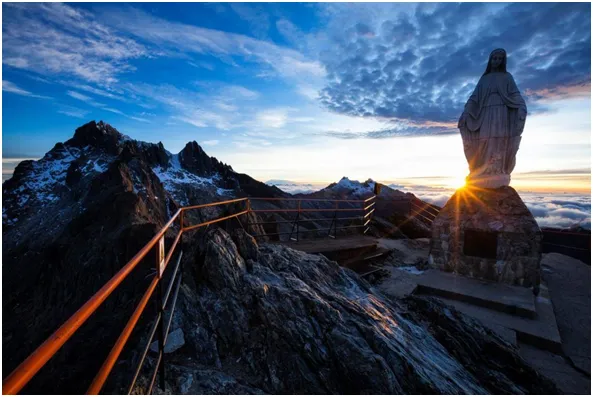
References:
I,. Monumento a Nuestra Señora de las Nieves (Mérida), una imagen mariana en la cima de Venezuela: https://iamvenezuela.com/2018/01/monumento-a-la-virgen-de-las-nieves/
II.- Virgen de Las Nieves en Pico Espejo: https://www.ivenezuela.travel/virgen-de-las-nieves-en-pico-espejo/
III,. El Troudi, Haiman (2020):.https://haimaneltroudi.com/la-virgen-de-las-nieves-reina-en-las-alturas/
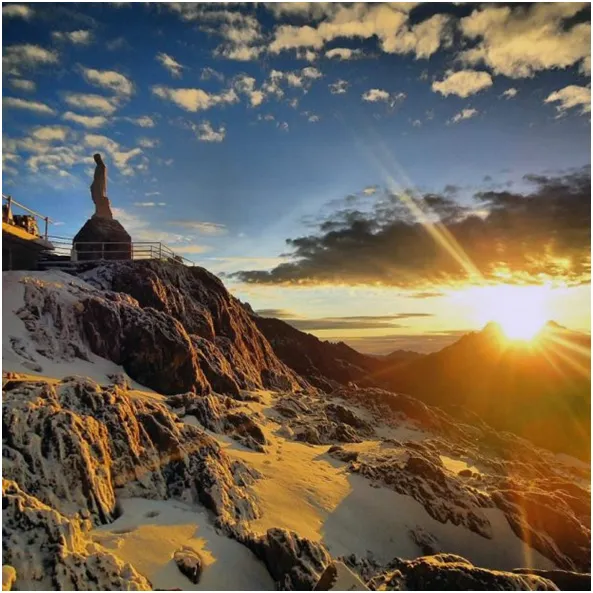
Estimados amigos de esta plataforma, hoy les voy a llevar a las alturas de las montañas más altas de Venezuela, donde fue levantada la escultura en honor a la “Virgen de las Nieves” a la que se puede ir fácilmente pues está muy cerca de la última estación del teleférico de Mérida; aunque los osados alpinistas pueden llegar a ella transitando caminos resbaladizos y pedregosos, teniendo que escalar gélidas y empinadas montañas. Espero disfruten de las imágenes y de la descripción de esta magnífica escultura y sus esplendoroso lugar.
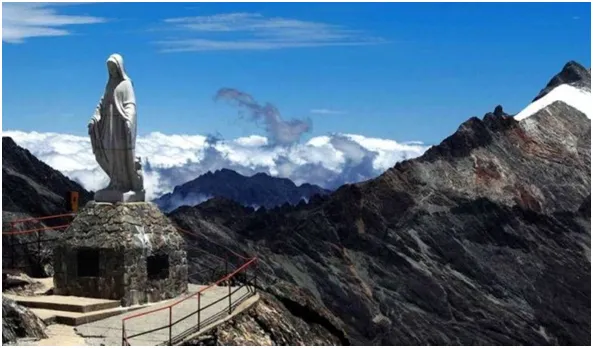
El arquitecto Haiman El Troudi, nos narra la historia de Nuestra Señora de las Nieves, la cual se inicia en el monte Esquilinio, una montaña nevada romana, donde dicen que la imagen de María fue vista por la pareja Juan Patricio y Licina Ignavia, quienes creyeron que era un milagro en respuesta a sus ruegos para poder concebir un hijo. El caso es que la pareja tuvo un hijo, por lo que, tiempo después, bajo el periodo del Papa Liberio, se construyó un templo en su honor. La devoción por la aparición de la Virgen en la nieve, se extendió por todo el mundo católico en plena decadencia del imperio romano. Véase: https://haimaneltroudi.com/la-virgen-de-las-nieves-reina-en-las-alturas/.
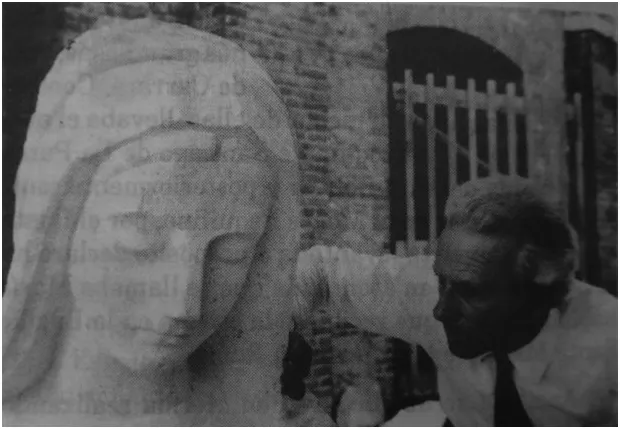
La imagen de la “Virgen de las Nieves”, como todas las vírgenes, es una advocación de la virgen María; la Iglesia Católica ha declarado el día 5 de agosto para celebrar su festividad. En nuestro país, la Virgen de las Nieves es venerada fundamentalmente por el pueblo merideño y su estatua ha sido colocada en la quinta y última estación (Mukumbarí) del Teleférico de Mérida a 4765 metros sobre el nivel del mar, rodeada de nieve y posada sobre un manto de flores alpestres llamadas frailejones, con los brazos semi extendidos, que producen un espectáculo único en el mundo.
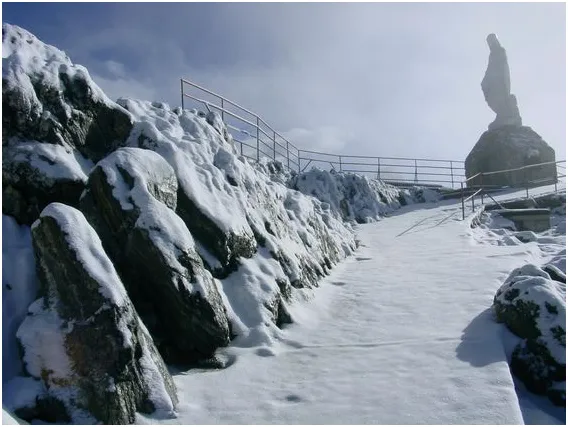
Se le considera la imagen mariana situada a mayor altitud en Venezuela y en el mundo. Como dato curioso vale la pena reseñar que esta imagen también es patrona de Ciudad Bolívar desde finales del siglo XVI, ciudad situada a 1255 kilómetros de Mérida, donde se cuenta que los expedicionarios españoles venían en retirada por la selva. Agotados, imploraron a la milagrosa Virgen romana que terminara sus padecimientos, mediante un novenario que culminó el 5 de agosto. Vide, Haiman El Troudi.
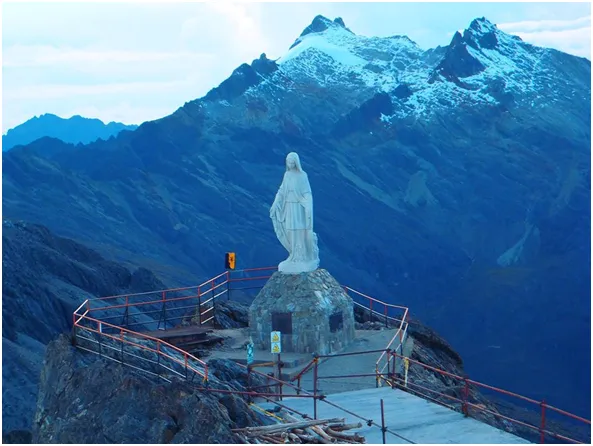
La escultura, edificada en 1965, tiene una altura de 3,5 metros y pesa cinco toneladas, fue esculpida en Italia por Walter Ribani, quien utilizó mármol de Carrara de altísima calidad. Para su traslado a la ciudad de Mérida y posteriormente al pico Espejo fue necesario fraccionar la estructura en tres partes lo que permitió usar los servicios del teleférico. La virgen mira hacia la ciudad de Mérida, está cubierta con una amplia túnica y en el pecho tiene un prendedor con el escudo de Venezuela; en el frente de la base se lee “Ave María”. La estructura se levanta sobre un pedestal cuadrangular de dos metros y medio de altura, rematado en la parte superior por una pirámide truncada, de dos metros y medio, hecho en concreto armado, cubierto de rocas de la zona, el cual fue diseñado por Raymond Ruffieux. El monumento a La virgen está colocada en una plazoleta cercana a la estación terminal del teleférico, en el pico “Espejo”.

Desde este monumento se puede apreciar el paisaje de la Sierra Nevada de Mérida, por lo que, además de ser espacio para el recogimiento espiritual, se ha convertido en un lugar para el disfrute de los turistas nacionales y extranjeros, en general.
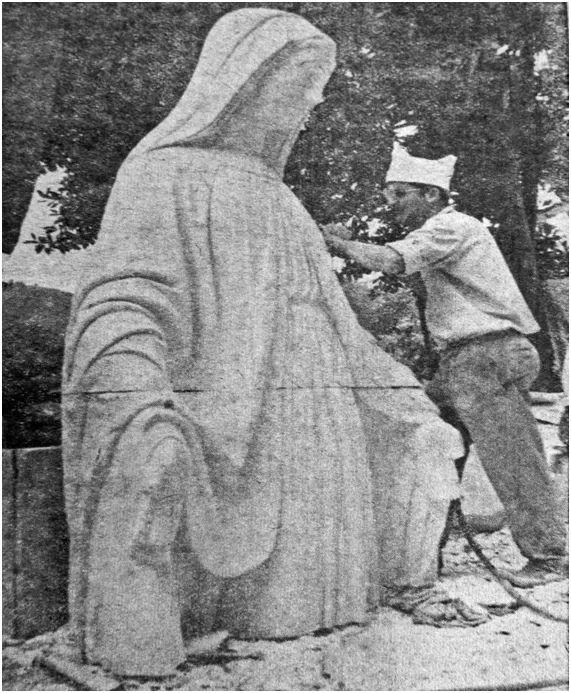
El monumento a la patrona de los andinistas y montañistas fue declarado, en 2007, Bien de Interés Cultural de la Nación, en virtud de ser la imagen de la virgen más famosa en el mundo por sus dimensiones, la calidad artística de la escultura y el local y altitud donde fue erigida.
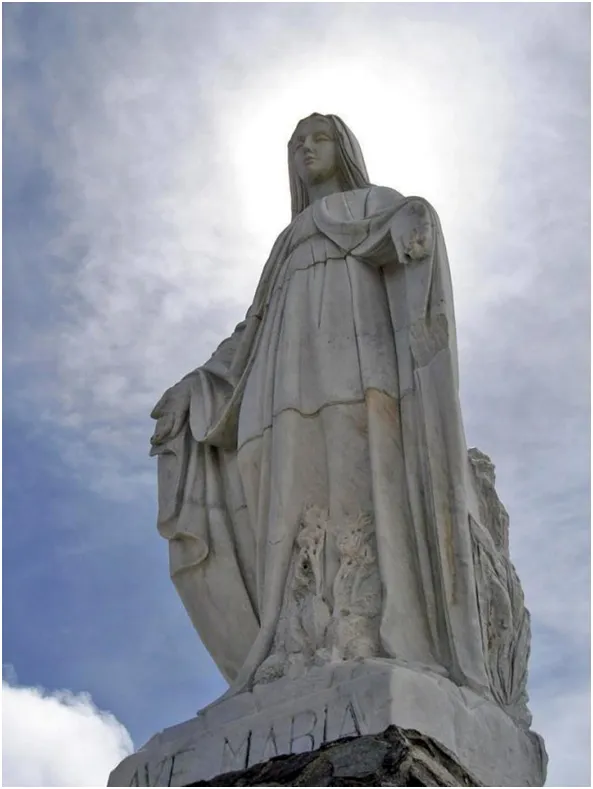
Image
Referencias:
I,. Monumento a Nuestra Señora de las Nieves (Mérida), una imagen mariana en la cima de Venezuela: https://iamvenezuela.com/2018/01/monumento-a-la-virgen-de-las-nieves/
II.- Virgen de Las Nieves en Pico Espejo: https://www.ivenezuela.travel/virgen-de-las-nieves-en-pico-espejo/
III,. El Troudi, Haiman (2020):.https://haimaneltroudi.com/la-virgen-de-las-nieves-reina-en-las-alturas/
